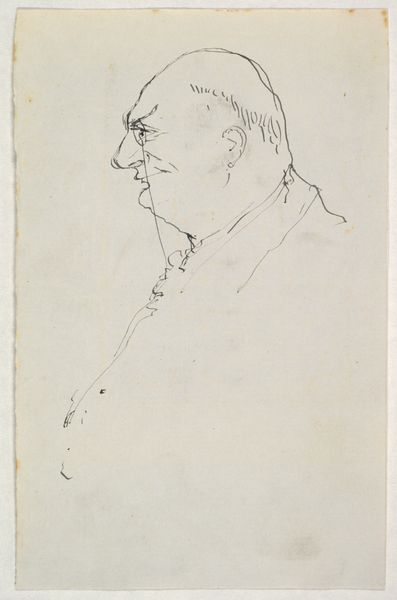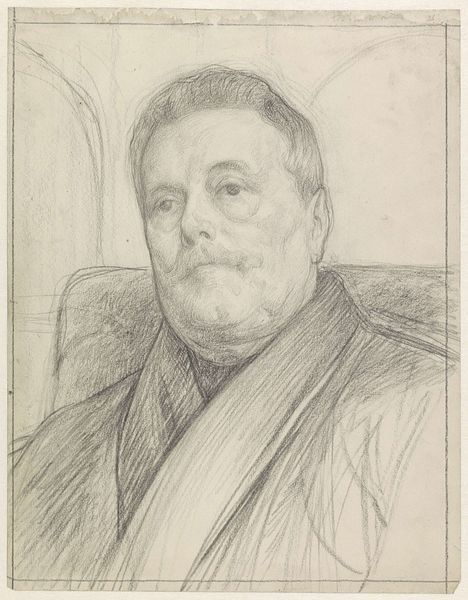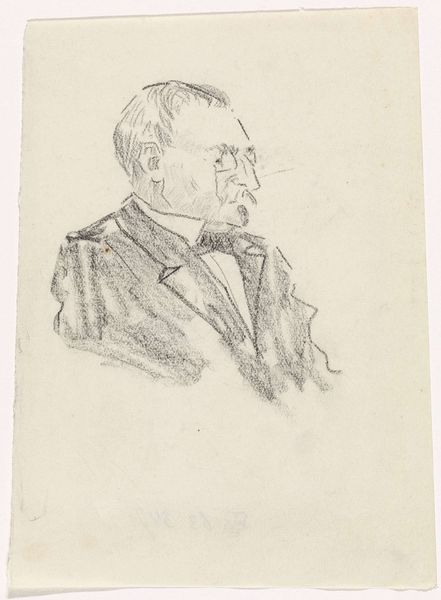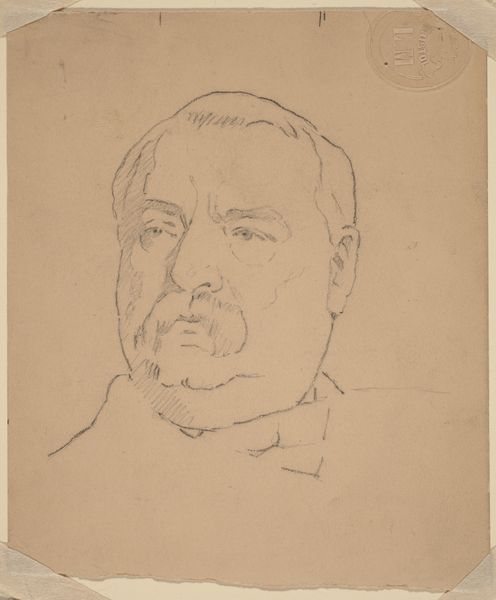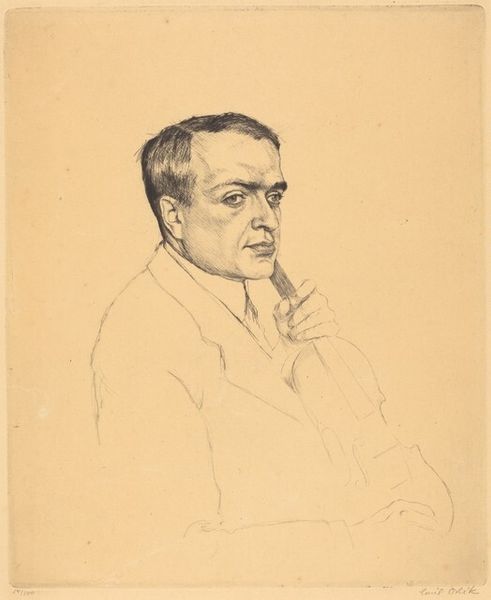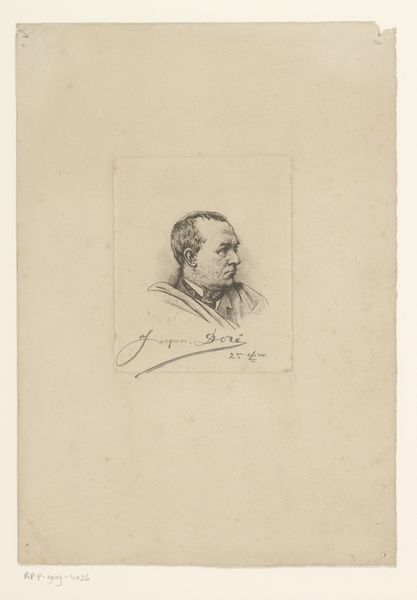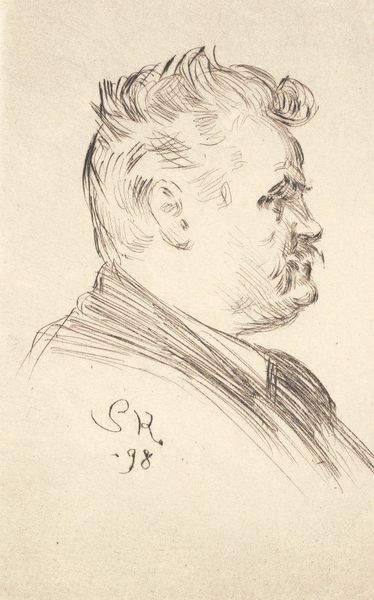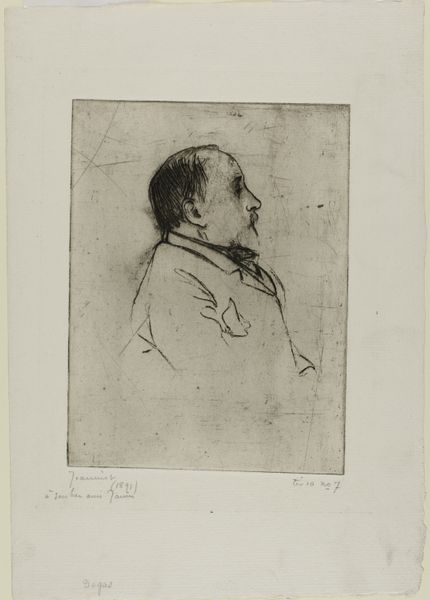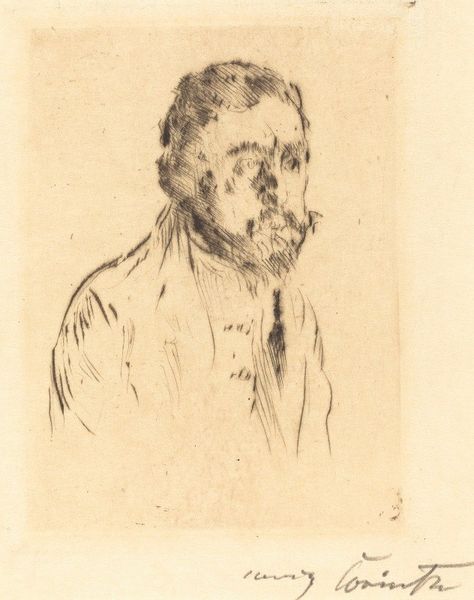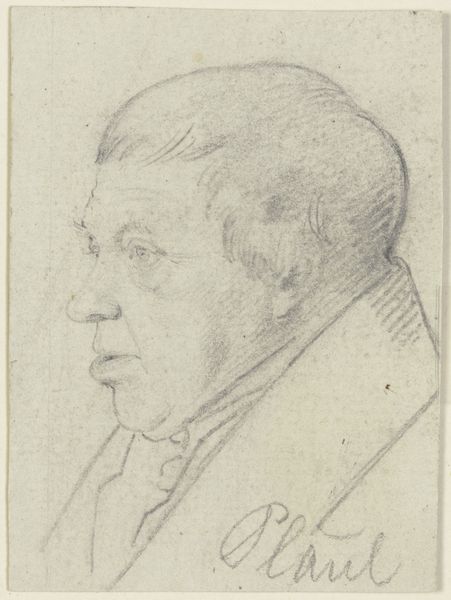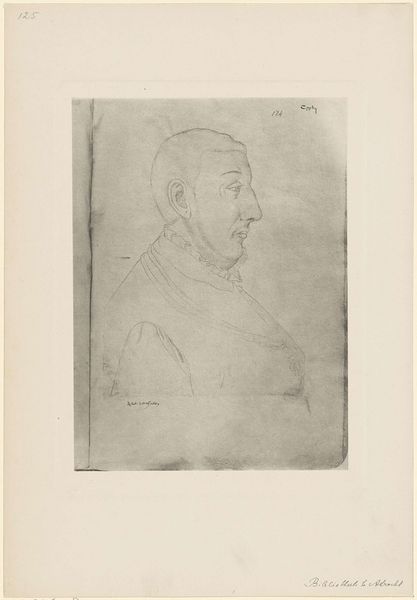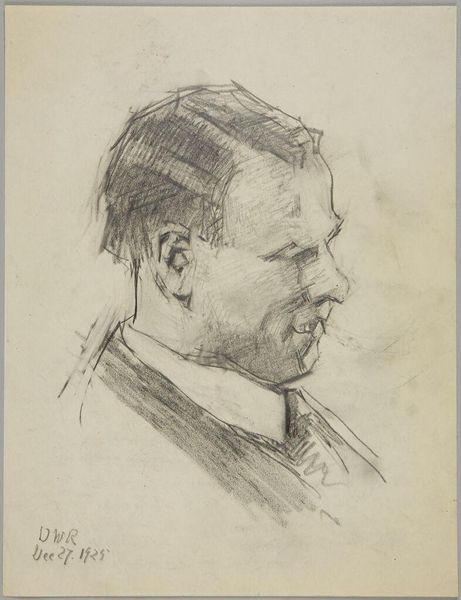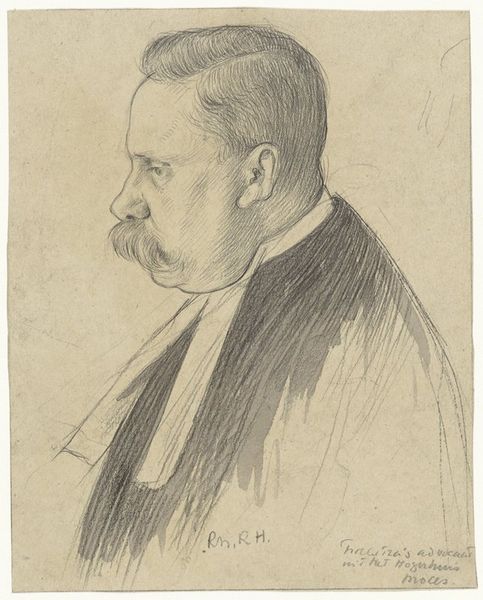
Dimensions: support: 292 x 225 mm
Copyright: © Estate of Stanley Spencer. All Rights Reserved 2014 / Bridgeman Art Library | CC-BY-NC-ND 4.0 DEED, Photo: Tate
Curator: Here we have Sir Stanley Spencer's drawing, Portrait of Louis Behrend, held within the Tate Collections. Editor: It possesses an understated quality, a quiet intensity in the man's gaze despite the simplicity of the sketch. Curator: Spencer, known for imbuing ordinary subjects with spiritual significance, seems to focus on Behrend's intellectual presence, a certain weight of thought. Editor: The single eyeglass suggests a very particular kind of engagement with the world, a focused vision perhaps even hinting at social class and status. Curator: It could represent Behrend's dedication to a specific area of knowledge or a refined perspective, but it also acts as an emblem of observation itself. Editor: It's a reminder that portraits are always about power, about who gets seen, and how. Even a humble sketch participates in that dynamic. Curator: Precisely, and Spencer's choice to render him with such delicate lines invites us to consider the inner life, the unseen complexities of the sitter. Editor: Ultimately, this speaks to the function of portraiture at the time, attempting to capture something of the person’s interiority.
Comments
tate 6 months ago
⋮
http://www.tate.org.uk/art/artworks/spencer-portrait-of-louis-behrend-t03337
Join the conversation
Join millions of artists and users on Artera today and experience the ultimate creative platform.
tate 6 months ago
⋮
John Louis Behrend (1881-1972) and his wife Mary were among Spencer's principal patrons. They first met him at a party given by the Bloomsbury socialite Lady Ottoline Morrell (1870-1938) in 1914; the following year they bought Mending Cowls (Tate T00530) and in 1919, after Spencer's return from the war, Swan Upping (Tate T00525). As well as accumulating what became the largest collection of Spencer's pictures, they owned pictures by Walter Sickert (1860-1942), Edward Burra (1905-76) and Augustus John (1878-1961), and several by Henry Lamb (1883-1960), whose famous Portrait of Lytton Strachey (Tate T00118) they commissioned in 1914. The Behrends were great patrons of the arts and, among other achievements, Mary Behrend commissioned Benjamin Britten's String Quartet No.2. first performed in 1945. In July 1923 the Behrends visited Spencer in Poole, where he was staying with Henry Lamb, and he showed them designs for a cycle of chapel decorations which illustrated his experiences in the First World War. As Spencer knew, Mary Behrend's brother had died of malarial encephalitis in Macedonia, where he too had served, initially in the Royal Army Medical Corps and then as an infantryman in the Royal Berkshire Regiment. By September 1923 the Behrends had commissioned Spencer to realise his designs and, from 1927 to 1932, he painted them in the chapel they had built at Burghclere, the Hampshire village where they lived. The Tate collection includes two studies for the project, Camouflaged Grenadier (Tate N04245) and Study for The Resurrection of Soldiers: Burghclere Chapel (Tate T05526). Spencer's friend Richard Carline (1896-1980), to whom Spencer gave it, believed the drawing of Louis Behrend was probably made during the period Spencer was first working on the Burghclere commission. At the time Spencer was living in a specially-built cottage in the village. Carline's widow Nancy thought the drawing was given to him around this time. In 1956 Spencer painted a portrait of Louis Behrend in oils (Leicester City Museum & Art Gallery) and presented it to him as a gift. Albeit reversed, this shows Behrend from the same viewpoint as his earlier pencil portrait, demonstrating both the strength of Spencer's visual memory and also how he could treat subjects in a similar way despite considerable gaps of time. Spencer made portrait drawings of his friends for much of his life, often head and shoulder views, as if they were seated before him. He enjoyed this activity, he said, because of his 'exquisite appreciation of heads' (Tate Archive 733.3.193). Spencer's oil portraits form distinct groups and cycles: those made of himself, those of his friends and lovers and more formal portrait commissions. They are all remarkable for their crisp drawing and sensitive grasp of character (see Keith Bell, Stanley Spencer: A Complete Catalogue of the Paintings, London 1992, pp.321-64). On the back of Tate's drawing of Behrend is a diagram apparently showing a wooden joint and a study of twisting figures, which may be related to Spencer's original design for The Resurrection of Soldiers at Burghclere. Further reading:Illustrated Catalogue of Acquisitions 1980-1982, Tate Gallery, London 1984, p.208, reproduced Robert UpstoneAugust 2001
